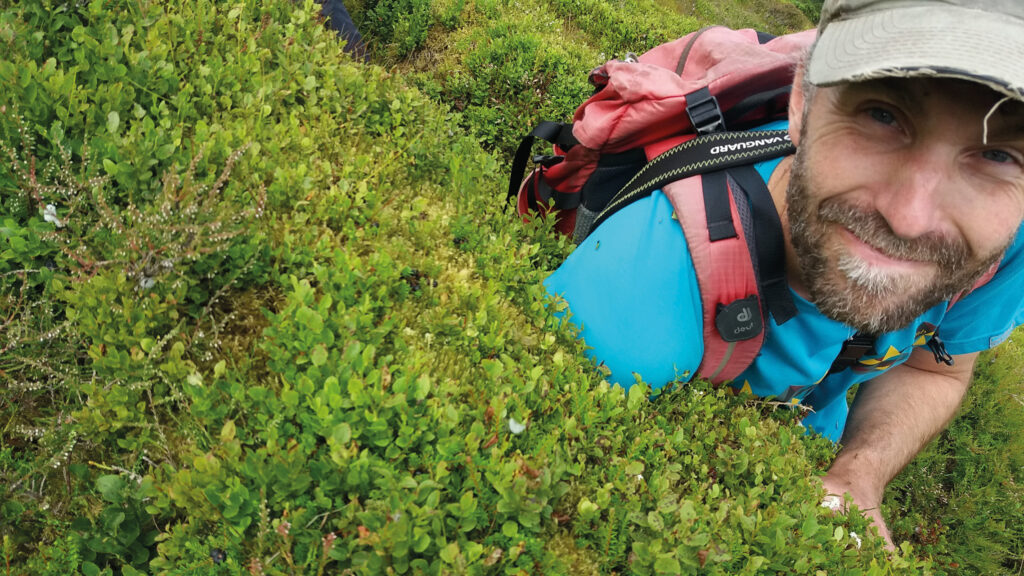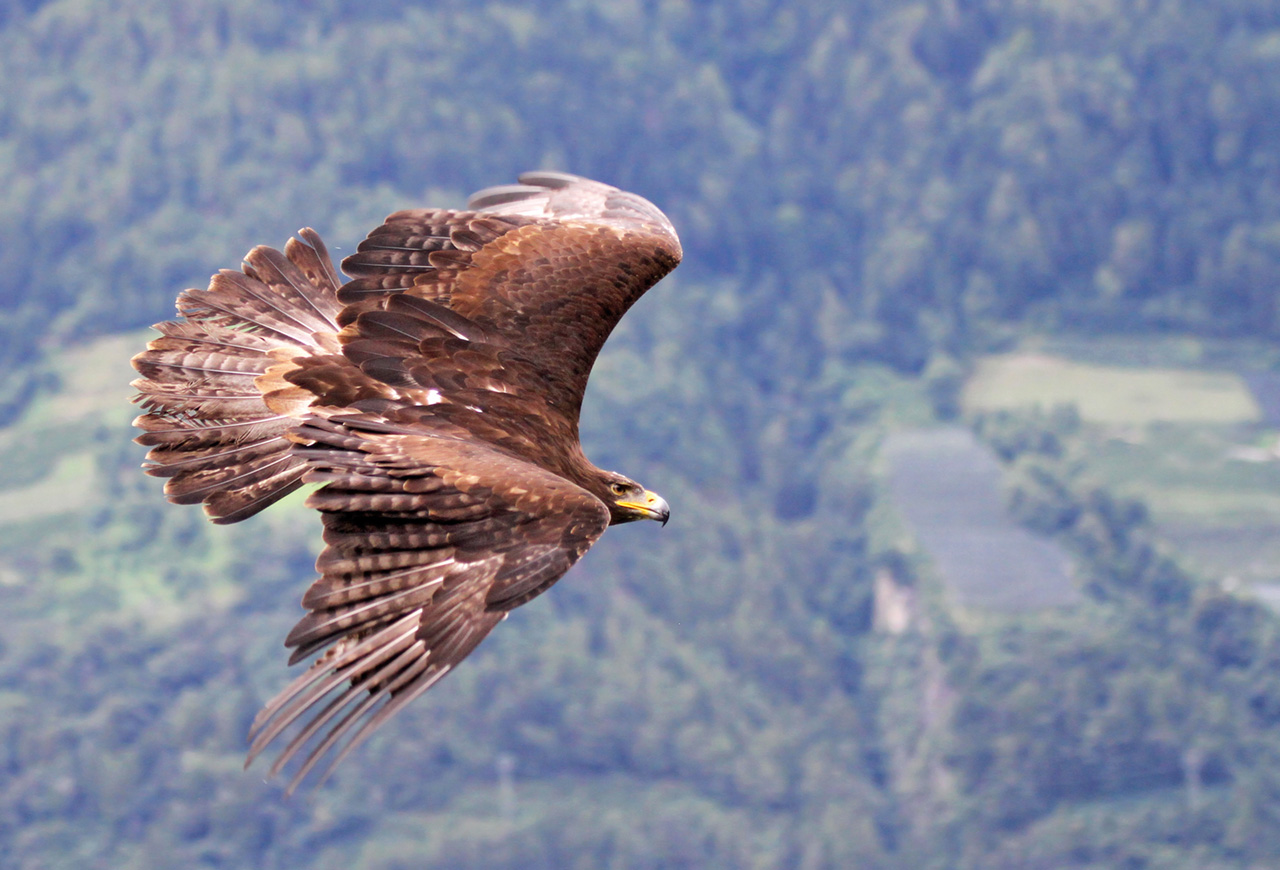Landing the eagle
The Lake District is the only English location in living memory where eagles dared to nest. Roger Ratcliffe talks to the author of a book describing an ambitious plan to bring them back
On fine days golden eagles may be seen soaring in circles, their wing-tip feathers upturned and splayed out like fingers clinging to the thermal currents rising from the mountainside below, seemingly with no other purpose than the pleasure of the flight.
“There is no more spectacular bird,” says Lee Schofield, who last saw one in the Lake District seven years ago. “Their sheer power and grace makes them incomparable. With two-metre wingspans and weighing more than a new-born human they can kill prey as large as young red deer. Their tendency to take lambs and game birds is why they’ve had such a history of persecution.”
“We were accused of dismantling thousands of years of custom and practice by the farmers.”
Indeed, golden eagles were exterminated from most of the British countryside by Victorian gamekeepers and farmers. A few pairs managed to survive in remote corners of the Highlands, however, and the bird made a slow recovery in Scotland. Then in 1969 the eagles unexpectedly returned to England. A pair was discovered nesting above Haweswater on the eastern side of the Lake District, becoming a popular attraction for thousands of visitors when a special eagle viewpoint was opened, but none have been seen since 2015.
Schofield now has the tough job of encouraging golden eagles back to nest. As senior manager at the Royal Society for the Protection of Birds (RSPB) Haweswater nature reserve, he is tasked with creating a landscape with sufficient prey to sustain them and their chicks.
In a new book about his Haweswater work, Schofield writes: “That the whole of England is incapable of supporting a single pair of golden eagles, where historically there were hundreds, should be a source of national shame.”
But in order to begin turning that around he admits facing an awkward dilemma, one he is reminded of every time he looks through the window of his office. In a word, his problem is sheep. Around three million graze on the Cumbrian mountains and many thousands are farmed in and around the 12 square miles of the RSPB’s Haweswater reserve, most of them roaming freely on the fells that form a spectacular backdrop to the lake.
It was in a dramatic valley called Riggindale, which runs from the lapping shore deep into a wall of summits known as High Street, that the golden eagles managed to maintain their only English outpost for more than three decades. But unlike the 500 pairs now nesting in Scotland, the Haweswater eagles hunting over the fells had precious little natural prey to sustain them – birds like grouse or mammals like rabbits, mountain hares and deer. Instead, they survived mainly by feeding on the carcasses of dead sheep.
This fact presents Schofield with a classic Catch-22 paradox that directly affects his chances of bringing back eagles, because sheep denude the landscape of foliage, their sharp teeth nibbling grasses and other plants right down to the ground like all-terrain lawnmowers, leaving no food to sustain the eagles’ usual prey.
“On the one hand, most of what the golden eagles ate at Haweswater was sheep carrion,” says Schofield. “But on the other hand sheep are the reason why the habitat is in a pretty poor state for eagles in the first place. So we would have to go through a period of reducing sheep numbers – meaning less carcasses as food – to get the habitat back again and provide a natural diet.
“While this would make it worse for eagles in the short term, hopefully it would make things better for them in the long run.”
Getting rid of sheep to entice golden eagles to return on a permanent basis is part of Schofield’s wider mission to operate a rewilding policy in this part of the Lake District that would also bring back other birds, plants and mammals. It is this ambitious programme that forms the main story of his book about Haweswater. Rewilding – a popular buzzword with conservationists – means the encouragement of more trees, scrub and other foliage to grow in what has become a largely barren landscape.
“It’s unfortunate,” says Schofield, “that the word rewilding contains the ‘re’ prefix, because it gives people unrealistic expectations. We’ve changed our landscape so much that there is no way to recreate past habitats. It’s neither feasible nor desirable, actually. What we need to do is create landscapes that deliver the needs of wildlife as well as of humans.”
His book paints a picture of a future Haweswater potentially teeming with abundant wildlife. “We’re starting with flowers and working our way up,” he writes. “Plants, and flowering plants in particular, are too often overlooked. We need to learn to appreciate wildflowers more, to notice and nurture those we have, and to restore the colour to our landscape. If we do this, we’ll have more insects, more birds, more reptiles and mammals. Achieve that and we’ll also have a landscape with more wildness and wonder, one more worthy of being passed onto our children.”

It would be unfortunate, Schofield believes, if the Lake District’s attainment of UNESCO World Heritage Site status five years ago meant it had to be preserved as a snapshot of exactly how it looks today.
“I try to communicate in the book that landscapes like these should never be static or fixed. They are always undergoing change.”
One of the biggest challenges he has faced in his mission to rewild thousands of acres of the Lake District fells has been how to bring on board the local farmers who for generations have been allowed to graze their sheep with no outside interference. In the book he tells the story of a meeting that was arranged by the biggest landowner in the area so that he could describe the project to tenant farmers and offer them some reassurance.
“I hoped I’d done a decent job,” he writes. “The reaction of my audience told me otherwise. As the farmers began putting up their hands, we were accused of dismantling thousands of years of custom and practice, of land abandonment, of rural depopulation, of not being neighbourly, of removing a stock of sheep that could trace their ancestors to the time of the Vikings, of reducing the nation’s ability to feed itself, and of wasting money. It felt like everyone in the room had come believing that we were about to destroy everything they hold dear, and went home thinking in exactly the same way.”
Looking back on that meeting he says now: “I think there was an effort to try and make [the RSPB] feel as uncomfortable as possible in the hope that perhaps we might quit and go somewhere else. And there is still plenty of tension, with lots of people believing that the farming system up there is sacrosanct and shouldn’t be changed, but we have now managed to build positive relationships with some farmers and landowners who can see the benefits of what we’re doing.”
Schofield’s remit is to create a landscape that is also capable of sustaining other wildlife species known to have vanished from the area. In the book he mentions the possibility of reintroducing beavers and water voles, and attracting red squirrels and pine martens. He is even daring to hope that the UK’s largest bird – the white-tailed eagle – might one day come back to nest there after being absent for centuries. The species was recently reintroduced on the Isle of Wight, and last year one of the satellite-tagged birds from there made a brief appearance at Haweswater.
But his priority is the return of the golden eagle as an English breeding bird, and he sees some hopeful prospects. “There’s a project underway in the Moffat Hills of the Scottish borders where golden eagle chicks are being brought down from their Highland stronghold to bolster the small population of two or three pairs already nesting there. That means there will be a healthy population of golden eagles right on the doorstep, making the chances of them recolonising the Lake District fells better than they have ever been.”
That will happen only when landscape conditions improve, Lee believes. But one day he hopes to witness the sight that confirms all his work has paid off – in early spring, a male golden eagle engaged in its tumbling, undulating display flight in the fond hope that a female is watching him, ready to mate, ready to nest.
Wild Fell: Fighting for Nature on a Lake District Hill Farm by Lee Schofield is out now, published by Doubleday

Leave a reply
Your email address will not be published.